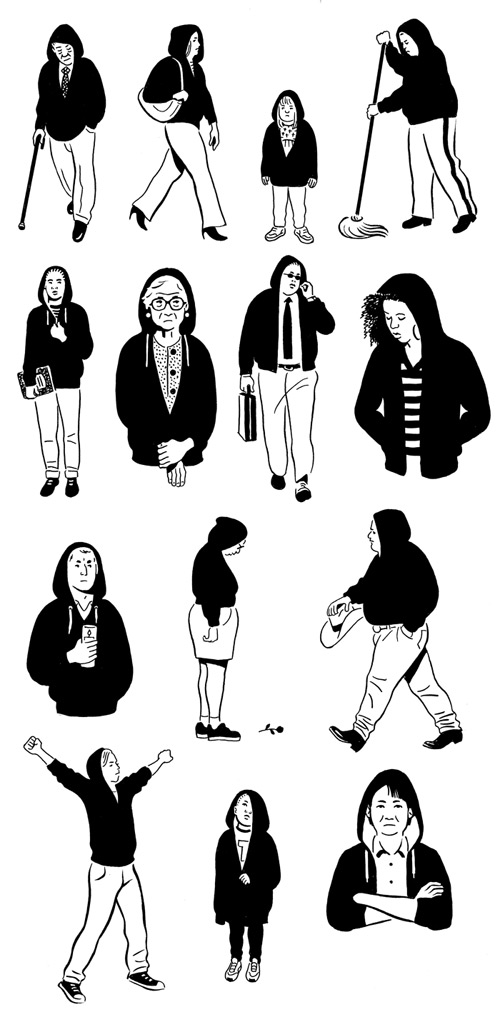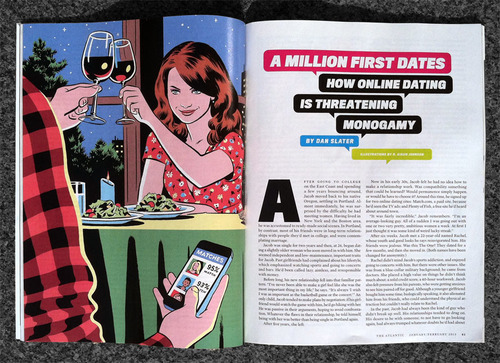 ↑ Atlantic Monthly feature on online dating.
↑ Atlantic Monthly feature on online dating.
 ↑ Finished spot illustrations. ↓
↑ Finished spot illustrations. ↓
![]() ↑ Unused digital sketch of a fly fishing date described in the article.
↑ Unused digital sketch of a fly fishing date described in the article.
Art Direction: Darhil Crooks
 ↑ Atlantic Monthly feature on online dating.
↑ Atlantic Monthly feature on online dating.
 ↑ Finished spot illustrations. ↓
↑ Finished spot illustrations. ↓
![]() ↑ Unused digital sketch of a fly fishing date described in the article.
↑ Unused digital sketch of a fly fishing date described in the article.
Art Direction: Darhil Crooks
This blog is typically reserved for professional work, but here's a recent personal project.
 ↑ "Kolea, Home For the Holidays." A watercolor of the flora and fauna in my parents' front yard.
↑ "Kolea, Home For the Holidays." A watercolor of the flora and fauna in my parents' front yard.
For the last few years, I've painted watercolors as Christmas gifts for my parents. They recently renovated my childhood home in Maui, and empty walls needed decorating.
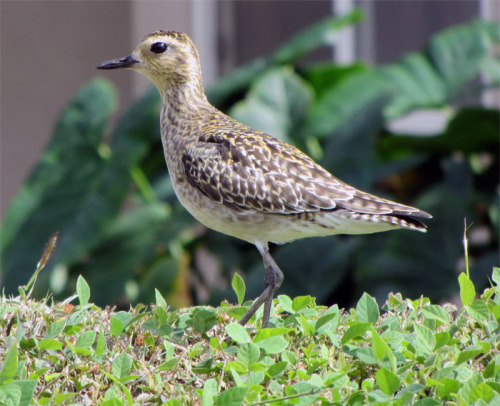 ↑ Kolea (Pacific Golden Plover) photographed in my front yard. This guy summers in the arctic tundra and returns to Hawaii each winter to defend his feeding ground in front of my parents' dinning room. He's the closest thing my folks have to a pet. I fly home to Hawaii every winter too and meet him there.
↑ Kolea (Pacific Golden Plover) photographed in my front yard. This guy summers in the arctic tundra and returns to Hawaii each winter to defend his feeding ground in front of my parents' dinning room. He's the closest thing my folks have to a pet. I fly home to Hawaii every winter too and meet him there.
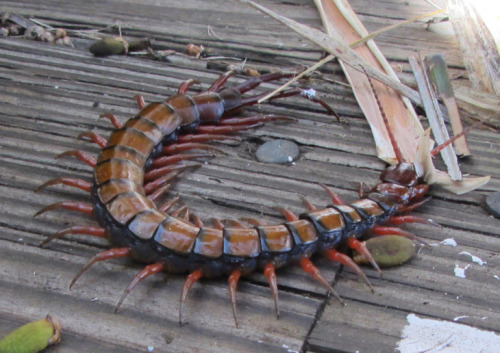 ↑ One of many large centipedes spotted on our porch. This one's about five inches long.
↑ One of many large centipedes spotted on our porch. This one's about five inches long.
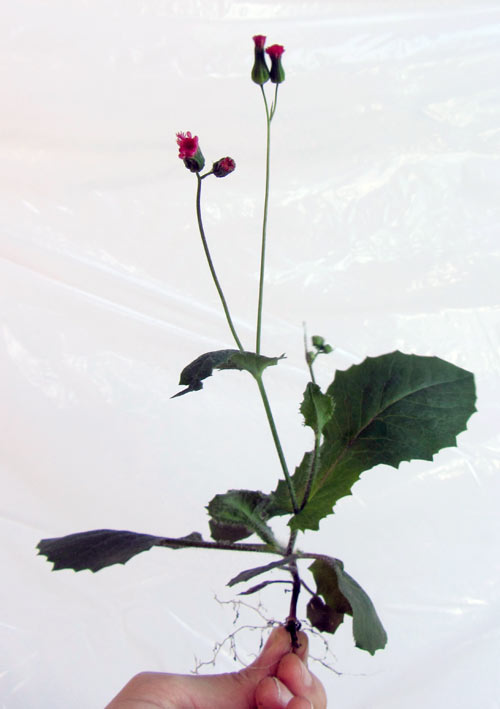 ↑ Many weeds were uprooted in search of the perfect silhouette.
↑ Many weeds were uprooted in search of the perfect silhouette.
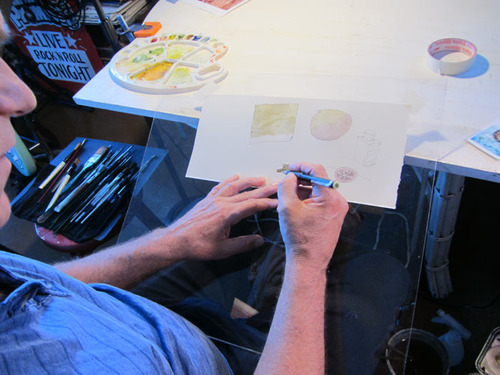 ↑ A watercolor lesson from Maui-based painter, Eddie Flotte.
↑ A watercolor lesson from Maui-based painter, Eddie Flotte.
There are a lot of artists on Maui; Lahaina town allegedly has more galleries per capita than any other town in the US. Among the many artists here, Eddie Flotte is the only one who paints a Maui that feels completely authentic to me.
Back in the early nineties, I used to occasionally pass Eddie and his easel on my walk home from elementary school. He'd be hard at work on a new plein air painting of Makawao town, and I'd silently peek over his shoulder. I had never seen an artist work before, and as a young kid that liked to draw, watching Eddie turn dark green globs of watercolor into sunlit trees was pure magic. Twenty-plus years later, I'm still a huge fan. Having no technical training with watercolor myself, I emailed to Eddie in hopes that he might let me pay a brief visit to his studio. Not only did he invite into his home for a look at his latest work, he sat me down for a three-hour impromptu painting lesson. I left fired up with whole new understanding of watercolor technique. It's rare that an encounter with an artist who I admire lives up to expectation, but Eddie's generosity and wisdom were as inspiring as his paintings.
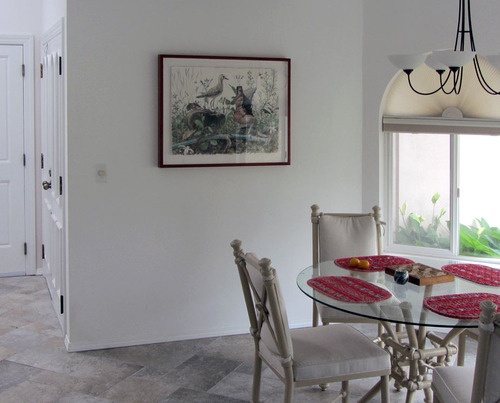 ↑ My parents' dinning room where the painting now hangs. From these windows, the Kolea can almost always be seen foraging from around October to May.
↑ My parents' dinning room where the painting now hangs. From these windows, the Kolea can almost always be seen foraging from around October to May.
 ↑ Float-mounting was another technique I picked up while working on this project.
↑ Float-mounting was another technique I picked up while working on this project.
 ↑ "Pitcher Plant," another Christmas gift in a similar vein. Yup, that's Mothra up top. I did this pen and ink drawing prior to the watercolor above, and it planted the seed for the Kolea piece. It was done for my good friend, Allison Maletz. She's an amazing watercolorist herself, and she did a gorgeous painting of my cat in exchange.
↑ "Pitcher Plant," another Christmas gift in a similar vein. Yup, that's Mothra up top. I did this pen and ink drawing prior to the watercolor above, and it planted the seed for the Kolea piece. It was done for my good friend, Allison Maletz. She's an amazing watercolorist herself, and she did a gorgeous painting of my cat in exchange.
I was just informed that the Illustrations below earned AARP magazine a Folio Ozzie award in the category,"Best Use of Illustration, Consumer above 250,000 Circulation" 2012.
 I have no idea what this means, but thanks!
I have no idea what this means, but thanks!
Feature illustrations for ESPN Magazine...
↑ Our newly reelected left-handed president.
 ↑ I'll probably never draw this guy again. ESPN Magazine.
↑ I'll probably never draw this guy again. ESPN Magazine.
Art Direction: Jason Lancaster
To celebrate its second return to press, here's a collection of sketches, production art, and notes from the making of The Shark King. Thank you to everyone who has contributed to the book's success!
↑ Rough style test for an unused book concept.
When Françoise Mouly approached me to do an early readers' comic for her Toon line, the first step was to sketch up a few loose concepts for possible books. One of my favorites followed a young pelican, Petey, through the northern Californian coast. Unfortunately for Petey, my sketchbook was promptly hijacked by the rascal who would eventually drive The Shark King.
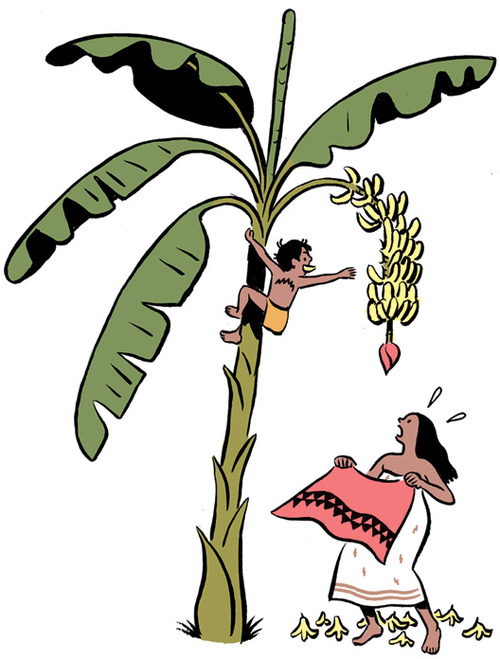 ↑ Nanaue and his mother, Kalei, in an unused vignette for the end papers of The Shark King.
↑ Nanaue and his mother, Kalei, in an unused vignette for the end papers of The Shark King.
I probably first came across Nanaue and his father, the shark-god Kamohoali'i, in elementary school. Rediscovering the mythology as an adult was a revelation. My interpretation in The Shark King tones down the violence of traditional versions in which Nanaue's insatiable appetite for meat compels him to dupe and devour passing fishermen. In some variations, he is ultimately butchered and cooked by villagers in retribution. Historians speculate that this story may have emerged to explain the terror of an ancient cannibal. Although brutal, the Nanaue myth has a strong emotional core in its protagonist, a young outcast searching for his place in the world.
The Shark King depicts ancient Hawaiians fishing with throw nets, fishing poles, and large hukilau (seine) nets. In my research, I learned that throw net fishing was introduced to Hawaii by Japanese migrants in the nineteenth century. Pole fishing began as an eighteenth century sport reserved for the ali'i (chief class). Of the three techniques illustrated, only the hukilau was likely practiced in ancient Hawaii.
Intricate lures, traps, spears, and a wide variety of nets were masterfully crafted and employed throughout ancient Polynesia. Early drafts of The Shark King included some of these tools, but their appearance was so unfamiliar, I ultimately decided that the space used to explain their function was better focused on Nanaue's struggle.
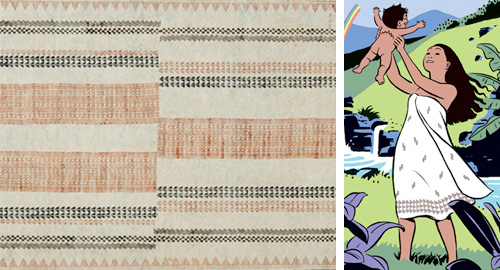 ↑ Barkcloth was produced throughout Polynesia, but Hawaiian kapa was renowned for its refined quality. Examples like this one inspired the patterns on Kalei's Pa'u (wraparound). From the collection of the Bishop Museum, Honolulu Hawaii.
↑ Barkcloth was produced throughout Polynesia, but Hawaiian kapa was renowned for its refined quality. Examples like this one inspired the patterns on Kalei's Pa'u (wraparound). From the collection of the Bishop Museum, Honolulu Hawaii.
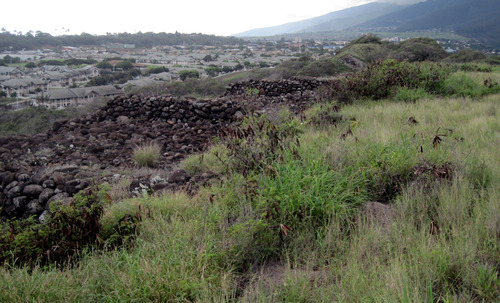 ↑ The ruins of an ancient Heiau (temple) complex overlooking sprawl in Waiehu, Maui. Invasive koa haole and other non-native plant species comprise the overgrowth. I took this photo on a research trip home. I grew up in the subdivision visible at the foot of the distant mountains in the upper right corner.
↑ The ruins of an ancient Heiau (temple) complex overlooking sprawl in Waiehu, Maui. Invasive koa haole and other non-native plant species comprise the overgrowth. I took this photo on a research trip home. I grew up in the subdivision visible at the foot of the distant mountains in the upper right corner.
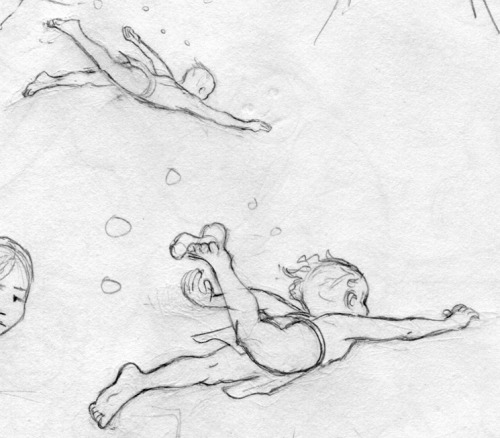 ↑ Sketchbook.
↑ Sketchbook.
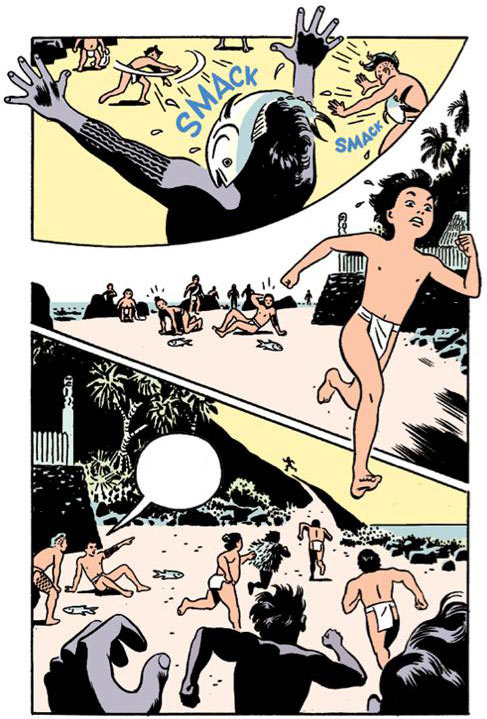
↑ Rejected style test for The Shark King. This looks more like a page from an 80s DC superhero comic than the kids book I had in mind.
↑ A more colorful and cartoony chase scene as it appears in The Shark King.
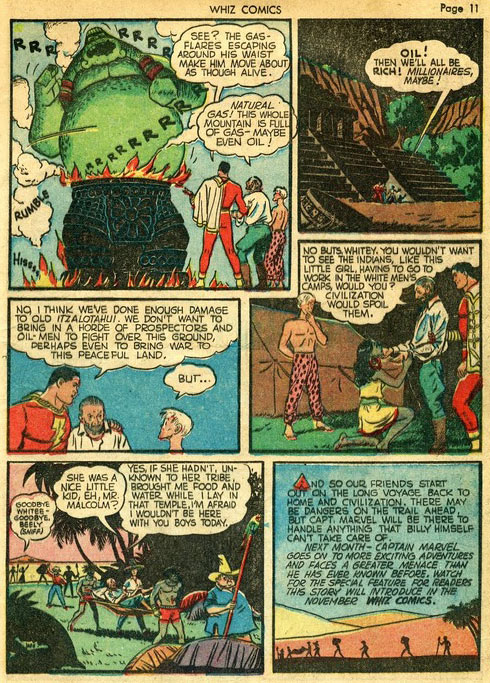 ↑ Whiz Comics #22 by C.C. Beck, 1941.
↑ Whiz Comics #22 by C.C. Beck, 1941.
While searching for a simple, direct, and colorful way to depict Nanaue's world, I returned often to the work of C.C. Beck. I'm always impressed by how much information he squeezed into his 1940s Captain Tootsie comic book ads without them ever feeling cramped. During his thirteen year stint illustrating Captain Marvel, Beck only wrote one 11-page story: 1941's "The Temple of Itzalotahui" (It's-a-lot-a-hooey). Although dated by cultural sensibilities, for me, this story is his best.
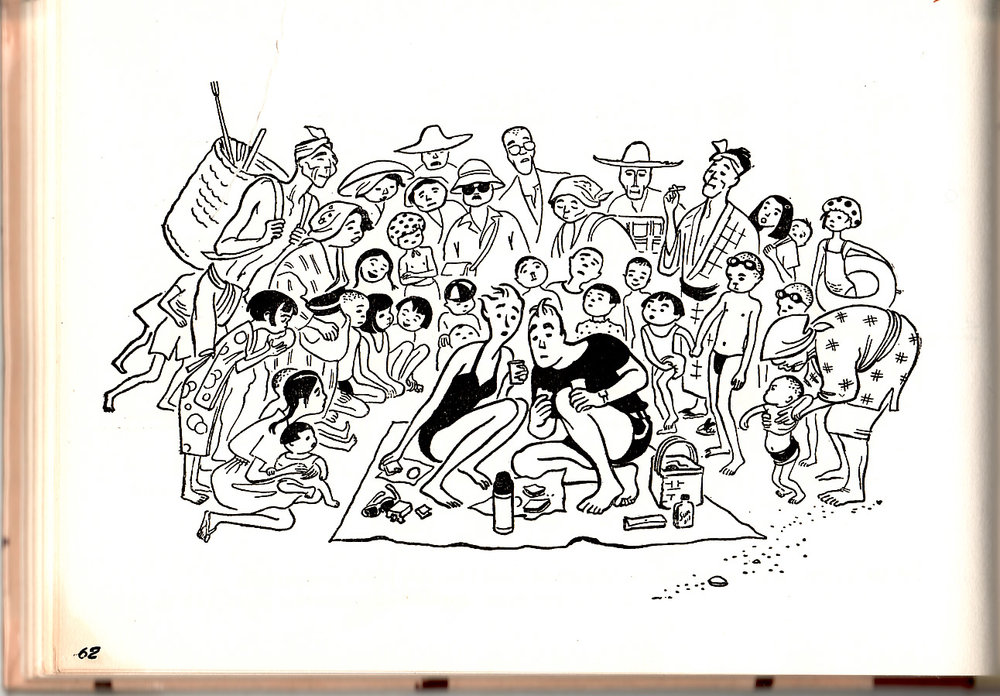 ↑ Anne Cleveland's elegant figure work in It's Better With Your Shoes Off, 1955, was another source of inspiration.
↑ Anne Cleveland's elegant figure work in It's Better With Your Shoes Off, 1955, was another source of inspiration.
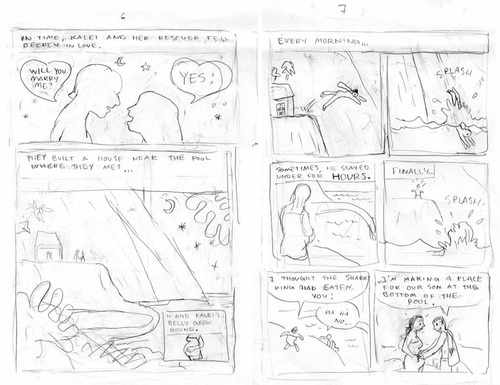 ↑ An early rough for pages 10 and 11. The entire book began as a loose cartoon manuscript and slowly tightened over the course of many subsequent sketch-drafts.
↑ An early rough for pages 10 and 11. The entire book began as a loose cartoon manuscript and slowly tightened over the course of many subsequent sketch-drafts.
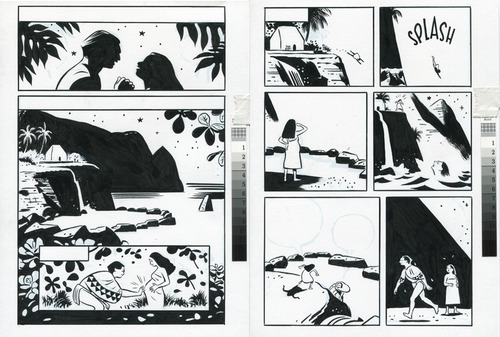 ↑ Raw scans of the finished pen and ink artwork.
↑ Raw scans of the finished pen and ink artwork.
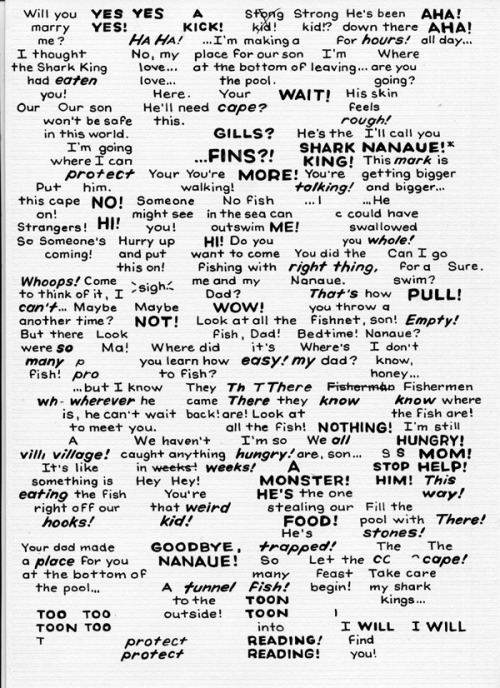 ↑ Hand lettering was done separately.
↑ Hand lettering was done separately.
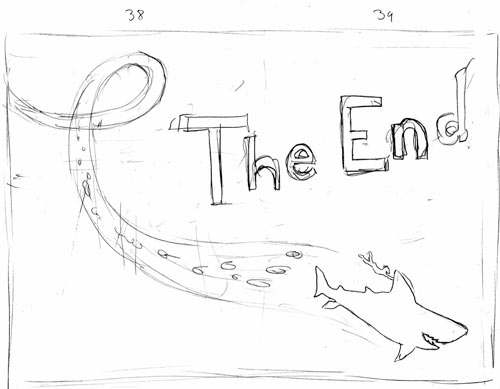
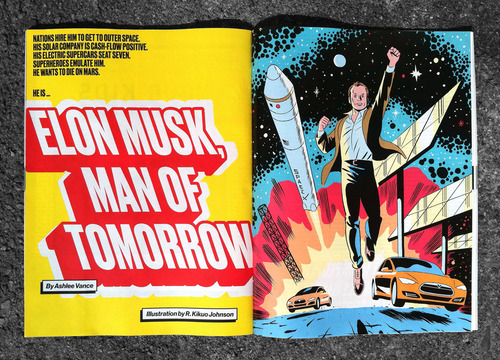 Feature Illustration for Bloomberg Businessweek.
Feature Illustration for Bloomberg Businessweek.
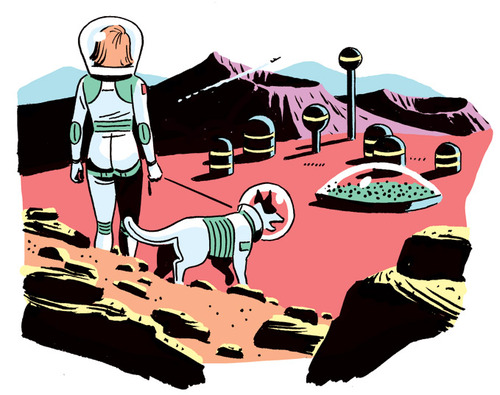 The article included 3 small spots imagining some of Musk's future innovations. I was thinking a lot about Wally Wood as I worked on these.
The article included 3 small spots imagining some of Musk's future innovations. I was thinking a lot about Wally Wood as I worked on these.
 An early sketch.
An early sketch.
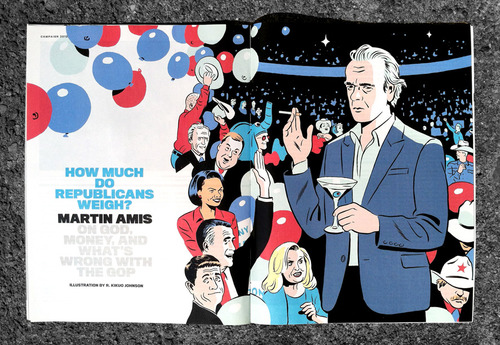 A feature by British novelist Martin Amis for Newsweek. I had less than a 48-hour deadline for this one: a day for sketches and a day for the final.
A feature by British novelist Martin Amis for Newsweek. I had less than a 48-hour deadline for this one: a day for sketches and a day for the final.
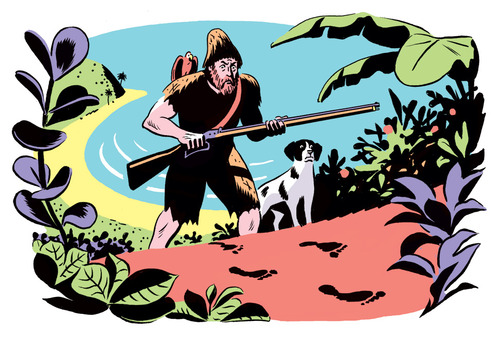 A recent commission from the New York Times. I always really enjoy tackling classic illustration subjects, especially the action-adventure variety. Below is another pirate-themed piece for the Sunday Book Review.
A recent commission from the New York Times. I always really enjoy tackling classic illustration subjects, especially the action-adventure variety. Below is another pirate-themed piece for the Sunday Book Review.
This week, the drawing below accompanied Zadie Smith's new fiction, "Permission to enter" in the New Yorker. As a fan of hers, this was a joy to work on.
The final art as it was printed.
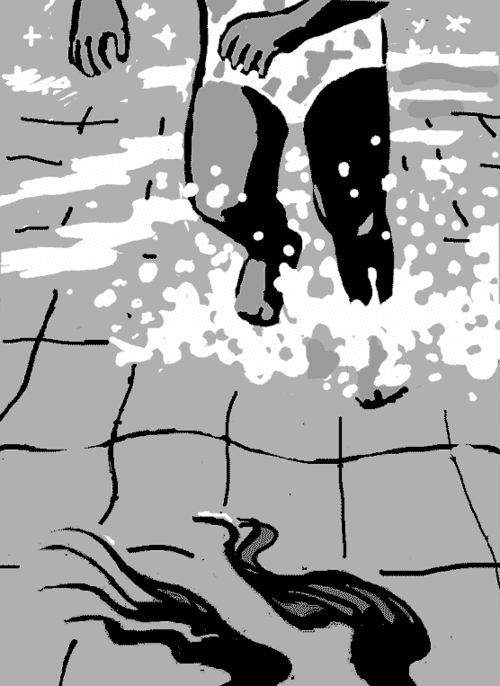 One of many alternate concept sketches.
One of many alternate concept sketches.
Art Direction: Chris Curry
Some recent small spot illustrations:
 Celiac disease, pot smoking, and sleeping pill addiction from an "ask the doctor" feature in New York Magazine. Art Direction: Rami Moghadam.
Celiac disease, pot smoking, and sleeping pill addiction from an "ask the doctor" feature in New York Magazine. Art Direction: Rami Moghadam.
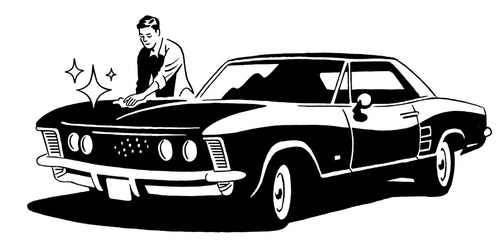 ‘63 Buick Riviera for Men's Health. Art Direction: Thomas O'Quinn.
‘63 Buick Riviera for Men's Health. Art Direction: Thomas O'Quinn.
News of a second printing comes on the heels of more great reviews including this one from Tom Spurgeon, the comics reporter. I have always found Tom's writing to be particularly sharp, so I was very flattered by his close reading of the Shark King. Tom also discussed the book on the Inkstuds podcast with a group of critics last month. Thanks for the attention guys!
 Me and a young shark fan at last month's signing.
Me and a young shark fan at last month's signing.

Brooklyn's Greenlight Bookstore is kindly hosting a reading for the Shark King. Bring the kids!

Saturday, June 23
11:00 AM
686 Fulton Street
Brooklyn, New York 11217
TOON Books presents another great graphic novel for the youngest readers with R. Kikuo Johnson's The Shark King! From the islands of Hawaii comes the electrifying tale of Nanaue, who has to balance his yearning for Dad's guidance with his desire for Mom's nurture. Award-winning cartoonist R. Kikuo Johnson transports young readers to the lush, tropical shores of his native Hawaii. Kikuo will read from his book and draw on our big easel too, and afterward he'll show kids how to draw their own sharks!
I recently had the pleasure of working on an illustration to accompany a lovely short fiction by Maile Meloy in the New Yorker.
 The editor, Chris Curry, sent me the layout above and suggested a dyptic with two separate scenes.
The editor, Chris Curry, sent me the layout above and suggested a dyptic with two separate scenes.

 I typically sketch until I have two or three decent concepts or until the sun is rising and I can't keep my eyes open. The three sketches above begun as very loose pencil sketches which I scanned and further developed in photoshop with a wacom tablet. After submitting these concepts, Chris suggested trying an eight-panel composition...
I typically sketch until I have two or three decent concepts or until the sun is rising and I can't keep my eyes open. The three sketches above begun as very loose pencil sketches which I scanned and further developed in photoshop with a wacom tablet. After submitting these concepts, Chris suggested trying an eight-panel composition...
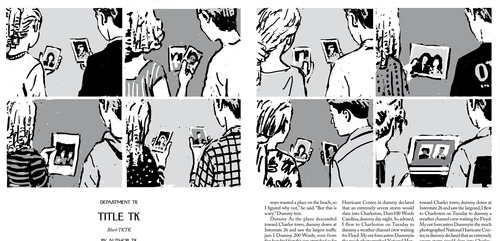 Sketch approved! One minor tweak to the first panel...
Sketch approved! One minor tweak to the first panel...
 I usually do a quick digital color study before I jump into the final.
I usually do a quick digital color study before I jump into the final.
 At this point, I turn the black lines of my color sketch faint yellow and print out the sketch on a tabloid sized piece of bristol board. The yellow ink, barley visible in the photo above, serves as my "pencils." I still use traditional media for inking: real brushes, nibs, and India ink. As you can see above, a fair amount of editing takes place during this stage as well.
At this point, I turn the black lines of my color sketch faint yellow and print out the sketch on a tabloid sized piece of bristol board. The yellow ink, barley visible in the photo above, serves as my "pencils." I still use traditional media for inking: real brushes, nibs, and India ink. As you can see above, a fair amount of editing takes place during this stage as well.
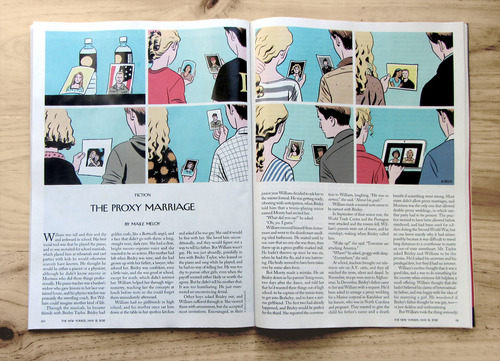 Next, the color gets added back in digitally, and, presto.
Next, the color gets added back in digitally, and, presto.
Illustration for a Print article about graphic designers who self-publish. Special thanks to Stephen Savage whose incisive metaphorical illustrations inspired this one (I draw the comparison at my own peril!).
I recently chatted with Gary Chun at the Honolulu Star Advertiser about the Shark King. Nothing like hometown love. Thanks Gary!
More Shark King Press.
Feature illustration based on the classic "Charles Atlas" comic book ad.
Art Direction: Chrissy Dunleavy
Today is the release date for the Shark King. I couldn't be happier with the way the printing and production turned out. Reviews have started rolling in, including a starred review from Booklist.
Regular readers of the New Yorker will be familiar with the weekly "spots:" a series of small, usually black and white illustrations scattered throughout the text of the entire issue. This has always been one of my favorite features of the magazine, so I was honored to when editor Françoise Mouly asked me to take a stab at it. She suggested the theme of hoodies in memory of Trayvon Martin.